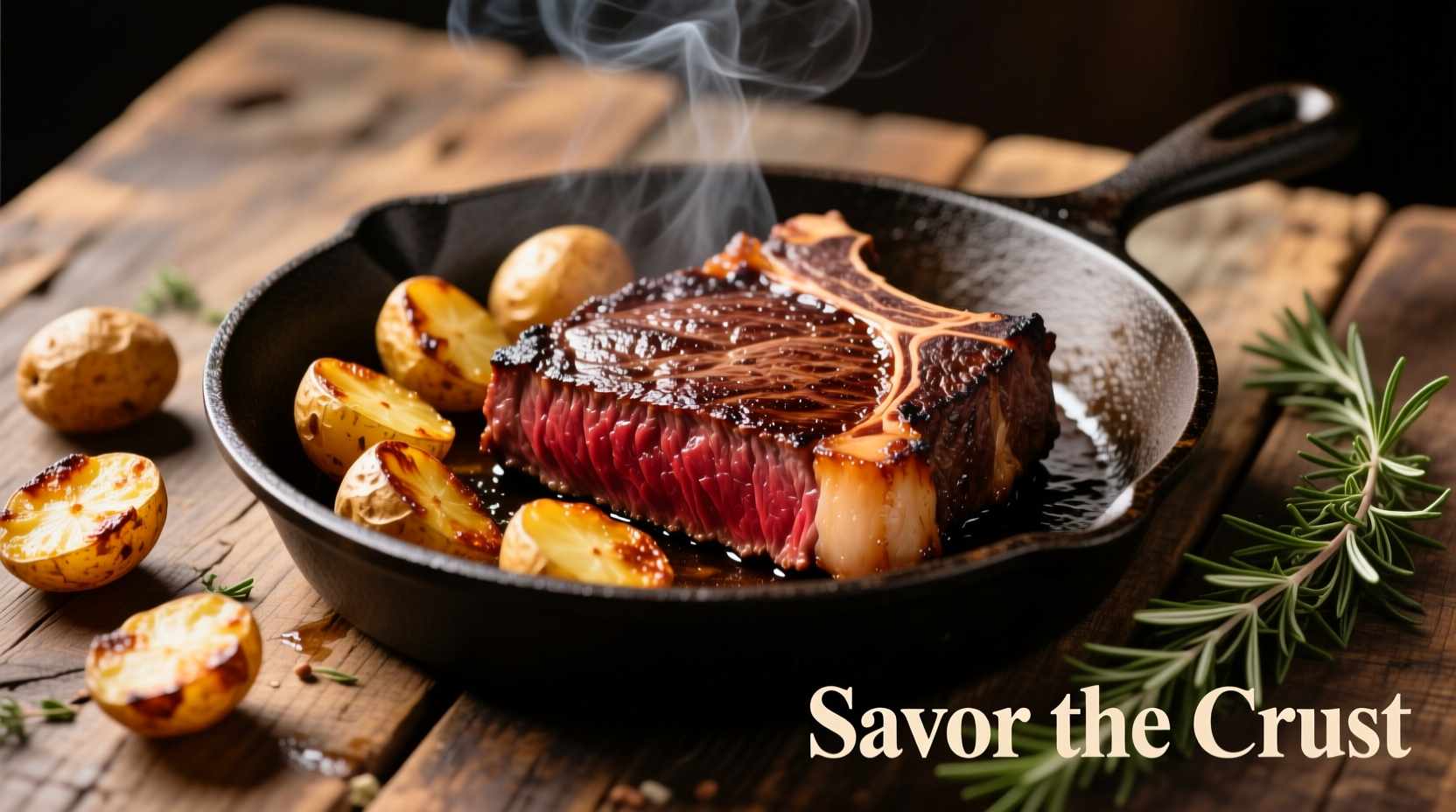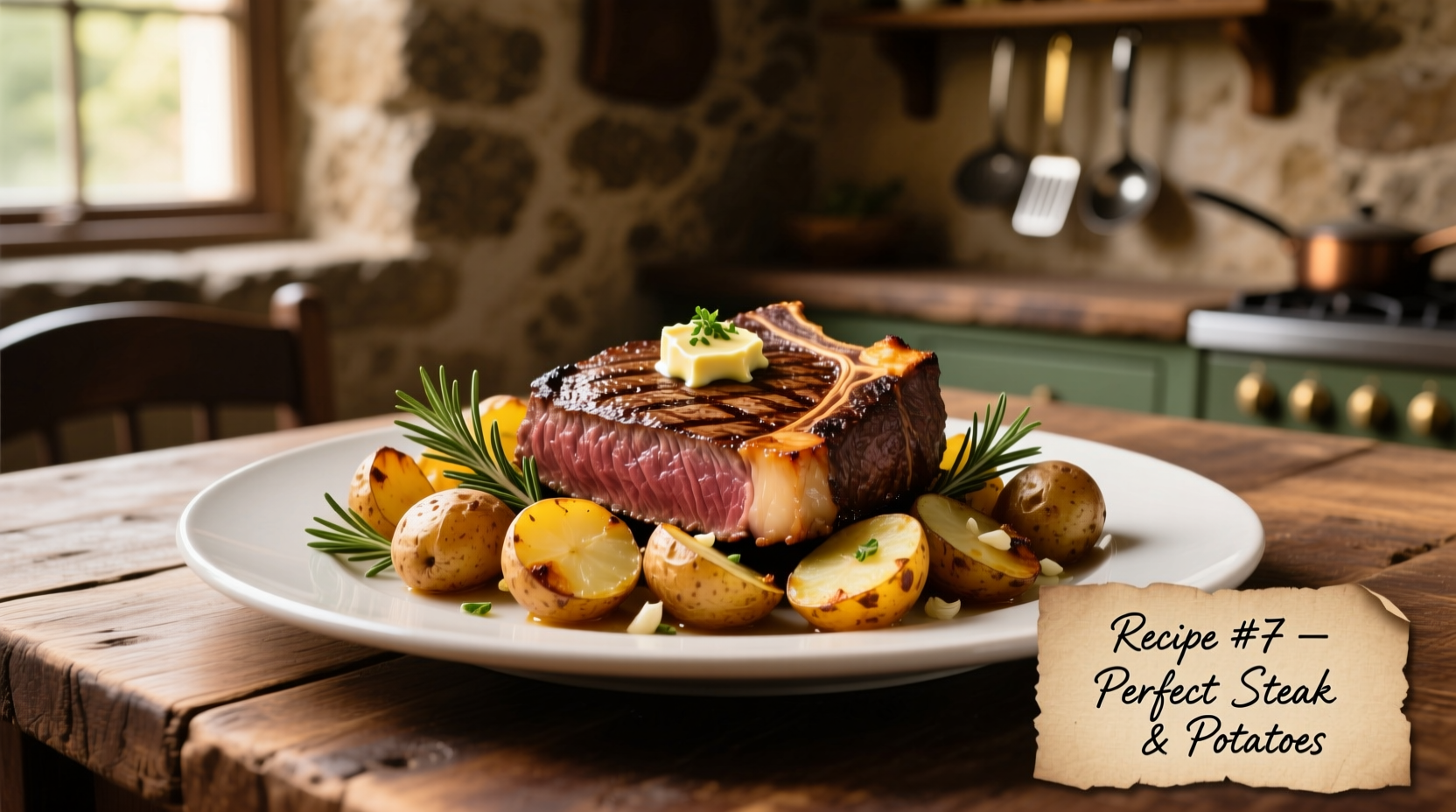Perfect steak and potatoes require selecting the right cut, proper seasoning, precise cooking temperatures, and timing coordination. This guide delivers restaurant-quality results with 3 proven methods, USDA-approved safety temperatures, and foolproof timing strategies that work for beginners and experienced cooks alike.
Nothing satisfies like a perfectly cooked steak paired with crispy, golden potatoes. Whether you're cooking for a special occasion or a weeknight dinner, mastering this classic combination elevates your culinary skills. Our tested methods eliminate guesswork, ensuring tender, juicy steak and perfectly textured potatoes every time—no professional kitchen required.
Understanding Steak and Potato Fundamentals
Before diving into recipes, understanding the building blocks creates better results. Not all steaks and potatoes perform equally in the kitchen, and matching the right components prevents common cooking disasters.
| Steak Cut | Best Cooking Method | Internal Temp (USDA) | Flavor Profile |
|---|---|---|---|
| Ribeye | Grill or cast iron | 130-135°F (medium-rare) | Rich, marbled, buttery |
| New York Strip | Pan-sear or broil | 130-135°F (medium-rare) | Beefy, firm texture |
| Filet Mignon | Sous vide or reverse sear | 125-130°F (rare-medium) | Mild, exceptionally tender |
| Flank Steak | High-heat grill | 120-125°F (rare) | Robust, best sliced thin |
According to the USDA Food Safety and Inspection Service, steaks should reach minimum internal temperatures of 145°F (medium) with a 3-minute rest period for safety. However, culinary professionals often recommend lower temperatures for premium cuts like ribeye and filet, which are safe when handled properly due to their intact muscle structure.
3 Foolproof Steak and Potato Recipes
1. Cast Iron Steak with Crispy Roasted Potatoes (30 Minutes)
This method delivers maximum flavor with minimal equipment. The cast iron technique creates a restaurant-quality crust while the potatoes roast underneath, absorbing delicious meat drippings.

Ingredients
- 2 (1-inch thick) ribeye steaks
- 1.5 lbs Yukon Gold potatoes, quartered
- 3 tbsp olive oil
- 4 garlic cloves, smashed
- 2 sprigs fresh rosemary
- Salt and freshly ground black pepper
Step-by-Step Instructions
- Preheat oven to 425°F and place empty cast iron skillet inside
- Toss potatoes with 2 tbsp oil, salt, and pepper; remove hot skillet and arrange potatoes in single layer
- Rub steaks with remaining oil, then season generously with salt and pepper
- Place steaks on top of potatoes, add garlic and rosemary
- Roast 15-18 minutes for medium-rare (130-135°F internal)
- Transfer steaks to cutting board, tent with foil, and rest 5 minutes
- Return potatoes to oven for 5-7 minutes to maximize crispiness
2. Grilled Steak with Garlic-Herb Smashed Potatoes
Ideal for summer cooking, this method separates the components for optimal results. The smashed potato technique creates maximum surface area for crispiness while maintaining a creamy interior.
Perfect Timing Timeline
| Time Before Serving | Potatoes | Steak |
|---|---|---|
| 45 minutes | Boil potatoes until fork-tender | Bring steak to room temperature |
| 30 minutes | Smash, season, and oil potatoes | Preheat grill to high (450-500°F) |
| 15 minutes | Place potatoes on grill | Sear steak 4-5 minutes per side |
| 5 minutes | Flip potatoes for final crisp | Rest steak |
3. Oven-Baked Steak with Hasselback Potatoes
When outdoor cooking isn't possible, this hands-off method delivers impressive results with minimal monitoring. The hasselback technique allows potatoes to cook through while developing crispy edges.
Troubleshooting Common Problems
Even experienced cooks encounter issues with this classic pairing. Understanding these context boundaries prevents meal disasters:
- Steak toughness: Overcooking is the primary culprit. Use an instant-read thermometer and remove steak 5°F below target temperature (carryover cooking continues the process)
- Soggy potatoes: Insufficient oil or overcrowding the pan prevents crisping. Toss potatoes in 1-2 tbsp oil and spread in single layer with space between pieces
- Timing mismatch: Potatoes typically need 15-20 minutes longer than steak. Start potatoes first or use the cast iron method where they cook simultaneously
- Burning issues: High-starch potatoes like Russets burn more easily than waxy varieties. Reduce oven temperature to 400°F when using Russets
Pro Techniques for Next-Level Results
Once you've mastered the basics, these professional methods elevate your steak and potatoes:
- Reverse sear: For thick-cut steaks (1.5+ inches), bake at 275°F until 115°F internal, then sear for perfect edge-to-edge doneness
- Compound butter: Mix softened butter with minced garlic, parsley, and lemon zest; place on hot steak during resting for instant sauce
- Acid balance: Finish potatoes with a splash of vinegar or lemon juice to cut richness and enhance flavors
- Salt timing: For best results, salt steak 45 minutes before cooking to allow penetration without drawing out moisture
Serving and Pairing Suggestions
Complete your meal with these professional finishing touches:
- Cut steak against the grain at a 45-degree angle for maximum tenderness
- Arrange potatoes around steak rather than underneath to maintain crispness
- Pair with full-bodied red wines like Cabernet Sauvignon or Malbec
- Add a simple green salad with vinaigrette to balance the richness
- Transform leftovers into steak and potato hash with fried eggs the next morning
How do I know when my steak is cooked to the right temperature?
Use an instant-read thermometer inserted into the thickest part of the steak. For medium-rare, aim for 130-135°F; medium is 135-145°F. Remove steak 5°F below target temperature as carryover cooking will raise the temperature during resting.
Why do my potatoes always burn before the steak is done?
This happens because potatoes need longer cooking time than steak. Start potatoes first, or use the cast iron method where potatoes cook underneath the steak, absorbing heat more gently. Reduce oven temperature to 400°F when roasting potatoes separately.
Can I use frozen potatoes for steak and potato recipes?
Fresh potatoes yield superior texture and flavor. Frozen potatoes often become mushy when roasted due to ice crystal damage. If using frozen, par-cook fresh potatoes first, then freeze for best results when needed.
What's the best potato variety for crispy roasted potatoes?
Yukon Gold offers the perfect balance of starch and moisture for crispy exteriors and creamy interiors. Russets work well but require careful temperature monitoring to prevent burning. Avoid waxy potatoes like red potatoes for roasting as they don't crisp as effectively.











 浙公网安备
33010002000092号
浙公网安备
33010002000092号 浙B2-20120091-4
浙B2-20120091-4